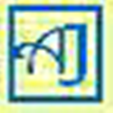Human Physiology - Locomotion and Movement
(NEET Syllabus): Origin
Types of movement- ciliary, fiagellar, muscular; Skeletal muscle- contractile
proteins and muscle contraction; Skeletal system and its functions (To be dealt
with the relevant practical of Practical syllabus); Joints; Disorders of
muscular and skeletal system-Myasthenia gravis, Tetany, Muscular dystrophy,
Arthritis, Osteoporosis, Gout.
Theoretical
Questions - TQ 2 (Q. No.9 - 11)
Long Answer Type Questions
Question.9: Describe structure of actin and
myosin proteins.
Question.10: Distinguish between
(a) Pronator and Supinator
(b) Abductor and Adductor
Question.11: Explain the Bones of Rib Cage.
Answer.9:
Actin
Proteins: Each actin filament is made up of the
following components -
(a) F-actin: In each actin filament, two
"F" (filamentous) actions helically wound to each other. Each
"F" actin is a polymer of monomeric "G" (Globular)
actins.
(b) Tropomyosin: Two filaments of another
protein, tropomyosin also
run close to the "F" actins throughout its length.
(c) Troponin: It is a complex protein which
is distributed at regular intervals on the tropomyosin. In the resting state a
subunit of troponin masks the active binding sites for myosin on the actin
filaments.
Myosin: Each myosin (thick) filament is also a polymerised
protein. Many monomeric proteins called Meromyosins
constitute one thick filament. Each meromyosin has two important parts, a
globular head with a short arm and a tail, the former being called the heavy
meromyosin (HMM) and the latter, the light meromyosin (LMM).
The HMM component, i.e.; the head and short arm projects outwards at regular
distance and angle from each other from the surface of a polymerised myosin
filament and is known as cross arm. The globular head is active
ATPase enzyme and has binding sites for ATP and active sites for
actin.
Answer.10:
(a) Pronator
and Supinator: The contraction of a pronator rotates the forearm to
turn the palm downward or backward. Supinator is antagonist of pronator. A
supinator contracts to rotate the forearm and thus to make palm face upward or
forward.
(b) Abductor
and Adductor: An abductor contracts to draw a bone away from the
body midline. Muscle that brings the limb away from midline is called abductor.
An adductor draws a bone towards the body midline. A muscle that brings the
limb towards midline is called adductor. Abductor muscle is antagonist of
adductor muscle.
Answer.11: There are 12 pairs of ribs.
Each rib is a thin flat bone connected dorsally to the vertebral column and
ventrally to the sternum. It has two articulation surfaces on its dorsal end
and its hence, called bicephalic.
First seven pairs of ribs are called true
ribs. Dorsally, they are attached to the thoracic vertebrae
and ventrally connected to the sternum with the help of hyaline cartilage. The
8th,
9th and 10th pairs of ribs do not
articulate directly with the sternum but join the seventh rib with the help of
hyaline cartilage. These are called vertebral
- chondral (false) ribs.
Last 2 pairs (11th and 12th) of
ribs are not connected ventrally and are therefore, called floating
ribs. Thoracic vertebrae, ribs and sternum together form the
rib cage or thoracic cage.
Human Physiology: Locomotion and Movement - Biology Objective Questions
Recent Posts
BIOLOGY
- Biology Objective Questions Test Series with Solutions: Reproduction in Organisms
- Free Online Practice Questions with Solutions for NEET, AIPMT, Medical Entrance Exams and MBBS Admission Tests: Diversity in The Living World, Biological Classification
- Animal Kingdom - Classification of Animals: Biology Questions and Answers for all Medical and Dental Entrance Exams, MBBS Admission Tests and other Competitions
- Free Online Preparation - Plant Kingdom and Classification of Plants: Biology MCQs for AIPMT and other Medical Entrance Exams, MBBS Admission Tests
- Human Reproduction, Reproductive Health - Biology Online Test Series for AIPMT, NEET, WBJEE, AFMC, OJEE, EAMCET, JIPMER, KIITJEE, COMEDK, BHU PMT, MBBS Entrance Tests
- Genetics and Evolution - short answer questions
- Genetics and Evolution - long answer questions
- Biology Objective Very Short Answer Type Questions - Breathing and Respiration, Exchange of Gases and More
CHEMISTRY
- States of Matter - Chemistry Online Test Series for IITJEE, COMEDK, WB Joint Entrance, VIT, EAMCET, AIPMT, NEET, AIEEE, BITSAT, AFMC, OJEE, Bihar PMT, KIIT, BHU PMT
- Chemistry Objective Test Questions with Solutions: Chemical Bonding and Molecular Structure
- Structure of Atoms: Chemistry MCQ practice questions with solutions for MBBS Admission Tests, Engineering Entrance Exams, IITJEE, NEET, NAT, IIST (ISAT) and other competitive examinations
- Hydrogen and its Compounds: Chemistry questions with solutions for IITJEE, NEET, AIPMT, KIITEE, VITEEE, WBJEE
- Classification of Elements, Periodic Table, Periodicity in Properties - MCQ Test Series for all Medical, Engineering Entrance Exams and Admission Tests
PHYSICS
- Physics MCQ Test Series with Solutions for NEET, IITJEE, BTech, MBBS and BDS Entrance Exams - Units, Dimensions, Measurements and Error Analysis
- Projectile Motion - Physics Online Test Series for AIPMT, NEET, IITJEE, AIEEE, WBJEE, NAT, BITSAT, AFMC, OJEE, Bihar PMT, KIITEE, COMEDK, VITEEE, UPCAT, EAMCET, JIPMER, BHU PMT
- Circular and Rotational Motions: Physics Practice Questions and MCQ Test Series for IITJEE, AIPMT, AIEEE, WBJEE, NAT, BITSAT, AFMC, KEAM, OJEE, Bihar PMT, KIITEE, COMEDK, UPCAT, JIPMER, BHU PMT and Joint Entrance Exams
- NEET, IITJEE, AIPMT, VITEEE, Engineering and Medical Entrance Tests Practice Questions on Newton’s Laws of Motion and Friction
- Free online Physics MCQ test series for IITJEE, NEET, AIPMT, Engineering and Medical Joint Entrance Exams - GRAVITATION










0 on: "Locomotion and Movement (Human Physiology) - long answer expected questions for NEET-UG, AIPMT, MBBS entrance exams"